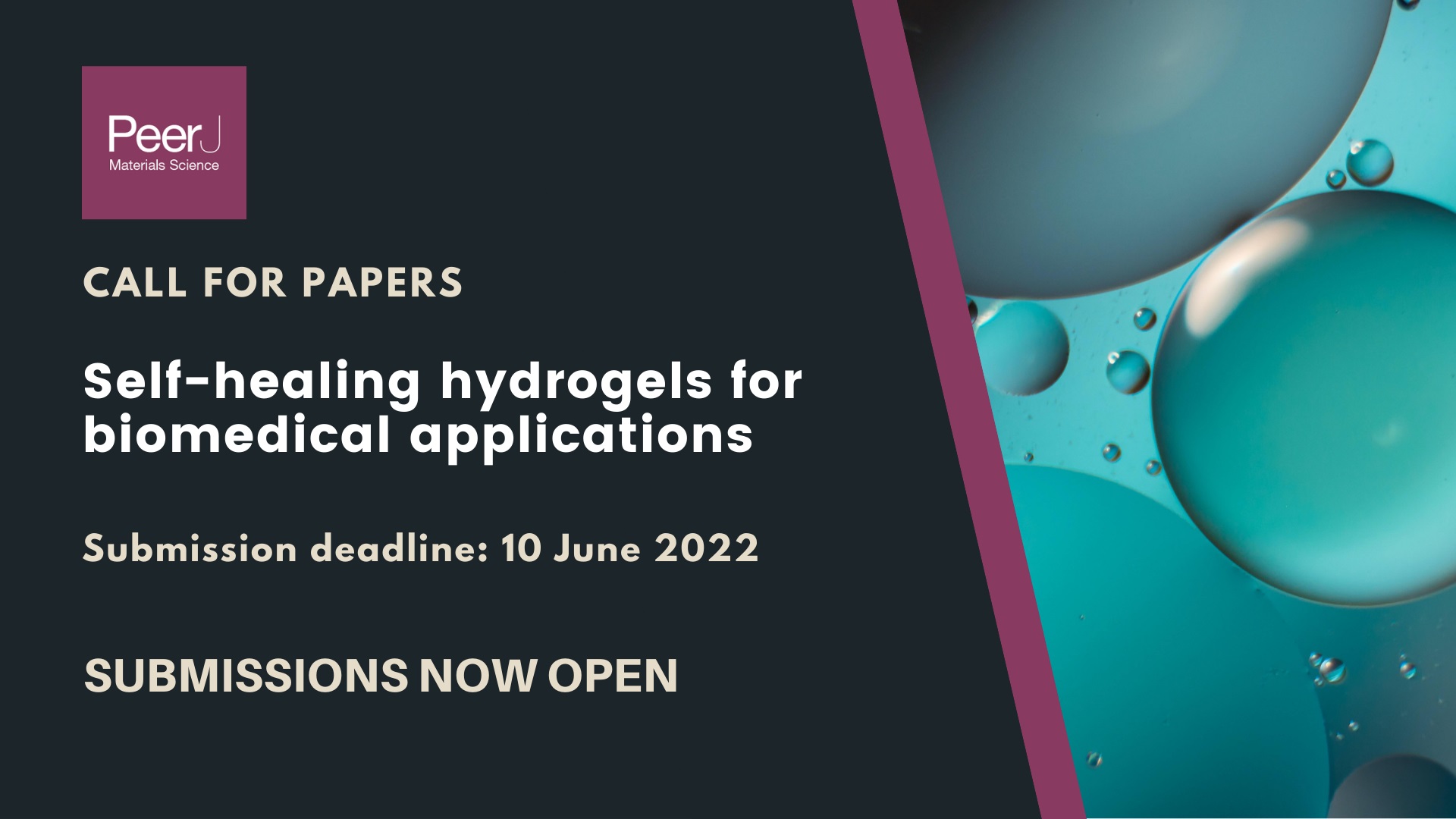
“Hydrogels are one of the most dynamic and intelligent materials with numerous potential uses. This Special Issue exploits new perspectives of a special class of hydrogels with self-healing ability. This topic will be of great interest to the PeerJ audience.” Special Issue Editor Andre Fajardo, Professor, Universidade Federal de Pelotas
Self-healing hydrogels for biomedical applications
In recent decades, the unique properties attributed to hydrogels have been exploited in numerous applications. Their use in biomedical applications is particularly encouraged due to their hydrophilic and tunable physicochemical and morphological properties. These soft materials are some of the most promising scaffolding biomaterials used, for example, in tissue engineering. To deal with this kind of application, hydrogels must exhibit properties that often mimic natural tissues, which includes self-healing mechanisms and strain-stiffening. Currently, the development of hydrogels with previously unrealised properties, such as the inherent ability of native tissues to regenerate when damaged, has motivated many researchers to concentrate their efforts on this exciting research field.
“The ability of organisms to self-heal allows them to evolve and adapt to changes in the environment. Mimicking such ability in the development of smart hydrogels is crucial for many applications. Understanding the chemical dynamics and mechanical properties involved in the process is challenging, exciting and fundamental for developing this new class of functional materials, self-healing hydrogels.” Special Issue Editor Antonio Guilherme Basso Pereira, Professor, Universidade Tecnológica Federal do Paraná (UTFPR).
This Special Issue invites the submission of original manuscripts reporting on studies into the development, characterization, and application of hydrogels not only in tissue engineering but broadly across the biomedical research field. Specific topics include polymer modification, hydrogel synthesis and characterization, self-healing properties and mechanisms, and the use of nanofillers to induce self-healing. Moreover, studies reporting the use of these self-healing hydrogels in tissue engineering, wound healing, drug delivery, and others are highly encouraged.
“Hydrogel self-healing and elastic recovery is often complex, involving physicochemical processes occurring on multiple time and length scales. Understanding this recovery is crucial toward designing new materials. This topic is of interest across multiple PeerJ journals.” Special Issue Editor Thomas Kodger, Assistant Professor, Wageningen University and Research
For more information and to submit your abstract, please visit: https://peerj.com/special-issues/103-hydrogels
———–
Interested in launching your own PeerJ Special Issue? Contact the PeerJ Communities team to find out how.
